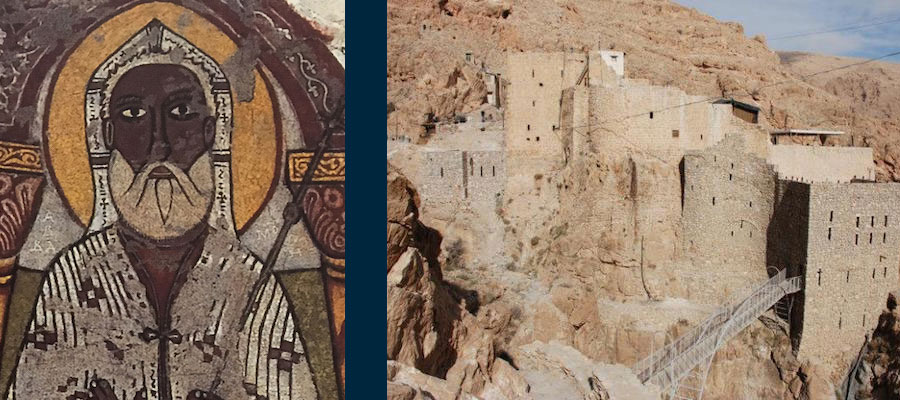Participants
Andrea Achi (Institute of Fine Arts, New York University)
Co-organizer and Respondent
Martina Ambu (Laboratoire de rattachement “Orient et Méditerranée: Mondes sémitiques “ Université Paris 1 - Sorbonne)
Antony and Macarius, the Desert Fathers: Myths and Reconstruction of the Ethiopian Monastic ‘Genesis'
Throughout the medieval period and until the mid-twentieth century, the Alexandrian Patriarchate had the sole authority to appoint the Metropolitan of the Ethiopian Church. This long institutional bond was apparent in the monastic world, as well. The knowledge and memory of the Egyptian Desert Fathers arrived in Ethiopia through the Vitae of the main representatives of the early Coptic monasticism, as is emphasized in the Ethiopian monastic genealogies. According to these Ethiopian lists, Antony and Macarius of Sketis were the Fathers of both Egyptian and Ethiopian monastic experiences. My paper investigates how this revised "history" and sacred "memory" led to a new specifically Ethiopian expression of the textual and visual iconography of these two Egyptian monks, portrayed as the father and son of the same monastic Egyptian and Ethiopian family.
Heather Badamo (University of California, Santa Barbara)
Devotional Graffiti: Writing, Ritual, and Remembrance in East Christian Churches
In the monasteries of Egypt and Syria, pilgrims and religious dignitaries scrawled hundreds of graffiti on church walls, transforming static structures into dynamic sites of commemoration. The inscriptions span several centuries and consist of prayers, death notices, traveler’s logs, occasional writings, and heraldic symbols. As material artifacts, they attest to a premodern culture of public writing that is captured in works like Abu’l-Faraj al-Isfahani’s Book of Strangers, a tenth-century collection of verses purportedly inscribed by passing travelers on walls and stones. The graffiti preserved at monasteries stand out from their literary counterparts owing to their reliance on site-specific formulae, religious content, and status as material interventions into the architectural fabric of monuments. As such, they provide rare physical evidence for how pilgrims interacted with sites and performed ritual actions. This paper focuses on graffiti from two east Christian sites: the Monastery of St. Anthony at the Red Sea in Egypt and Deir Mar Musa al-Habashi in Syria. Drawing on recent work on commemoration, it considers how the practice of inscribing prayers constituted a rhetoric of re-enactment that was founded on the repetition of key phrases, gestures, and bodily actions. When examined as both a commemorative and performative practice, devotional graffiti emerges as a key medium of memory, preserving the material traces of presence, documenting past communications, and ensuring ritual continuity as a bulwark against the transient nature of physical existence.
Vince Bantu (Covenant Seminary)
Egyptian Memory Layers in the Ethiopic Maṣḥafa Berhān
The Ethiopian Orthodox Täwahïdo Church has deployed a rich network of memories in the construction of its unique ethno-ecclesial identity, not least of which is their Coptic Orthodox neighbors downriver. The fifteenth-century administrative and literary career of Emperor Zar‘a Ya‘qob—especially the Ge’ez text attributed to him known as Maṣḥafa Berhān (“Book of Light”)—represents pivotal reforms in Ethiopian Christianity memory against the backdrop of Sabbath controversies. This paper explores the symbolic presence of the Coptic Orthodox Church in the Maṣḥafa Berhān and its expression of complicity, compromise and resistance in the development of Ethiopian ecclesial identity and historical memory.
Meseret Oldjira (Princeton University)
Co-organizer and moderator
